The Ultimate Guide to Croton Plants: Types, Care, and Benefits
Croton plants, scientifically known as Codiaeum variegatum, are evergreen shrubs that are easy to care for and add a splash of color to any space. Predominantly found in Southeast Asia, these vibrant plants are popular for their strikingly colorful leaves. Let’s dive into the world of croton plants, exploring their types, care tips, and benefits.
Types of Croton Plants
Croton plants come in various types, each with unique characteristics. Here are some of the most popular ones:
Banana Croton Plant
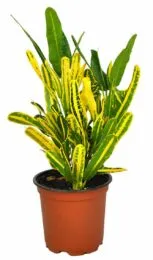
Source: Pinterest
The Banana Croton plant is known for its oddly shaped green leaves with yellow veins. Its unique appearance makes it a standout in any garden or indoor space.
Rushfoil Croton Plant

Source: Pinterest
Commonly known as Michaux’s croton or Croton michauxii, the Rushfoil croton plant is another fascinating variety with its own distinct charm.
Gold Dust Croton Plant
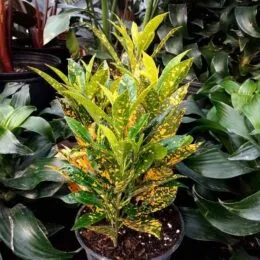
Source: Pinterest
The Gold Dust croton plant is a bright and beautiful variety that looks as if gold dust has been sprinkled on its bright green leaves.
Mrs. Iceton Croton Plant
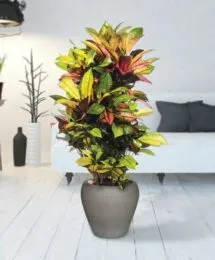
Source: Pinterest
Mrs. Iceton croton plant features long, narrow leaves in a stunning array of colors, including yellow, pink, bright green, red, orange, and burgundy.
Oakleaf Croton Plant
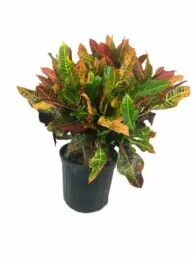
Source: Pinterest
The Oakleaf croton plant is a bit challenging to grow and requires at least four hours of direct sunlight. Its leaves come in a mix of green, pink, red, yellow, and orange.
Petra Croton Plant
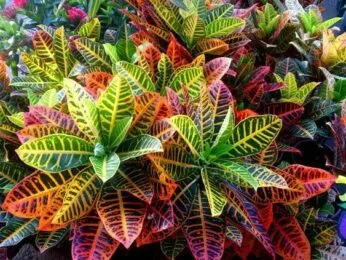
Source: Pinterest
The Petra croton plant displays rainbow shades when exposed to bright sunlight and requires medium maintenance.
Zanizar Croton Plant

Source: Pinterest
The Zanizar croton plant has leathery leaves in green, yellow, pink, and orange, with thin, shoestring-sized leaves.
Croton Mammy
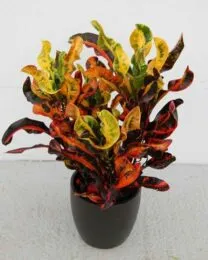
Source: Pinterest
Croton Mammy is a variety of Codiaeum variegatum known for its green and yellow variegated leaves.
Garden Croton
Garden croton refers to any variety of croton grown in gardens. Outdoors, a croton plant can grow to around six to eight feet, while potted crotons tend to be shorter. The average lifespan of a croton plant is two to four years.
Croton Plant Indoor
Croton plants are a popular choice for indoor décor due to their leathery, thick leaves that come in various colors, sizes, and shapes. While green croton plants are common, you can also find them in shades of yellow, orange, and scarlet. As the plant ages, its leaves darken, adding a dynamic splash of color to your home décor.
Croton Plant Flower
Croton flowers resemble tiny stars and hang from the branches. There are male and female croton flowers. Male flowers are white and star-like, while female flowers are yellow, lack petals, and look like balls. Crotons can flower both indoors and outdoors if the conditions are favorable, typically during summer and spring.
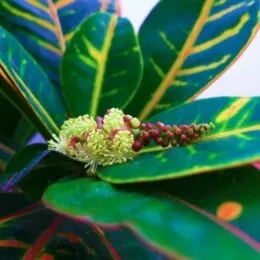
Source: Pinterest
Benefits of a Croton Plant
Croton plants offer several benefits:
- Air Purification: They help improve air quality in your home.
- Mental Health: The vibrant colors of croton plants can positively impact mental health and spread positivity.
- Medicinal Uses: Despite safety concerns, croton plants are used in some industries to make medicines.
How to Plant Croton Plants at Home
Planting croton plants at home is straightforward:
- Choose a Pot: Ensure the pot has small holes at the bottom for drainage.
- Planting: Place the croton plant in the pot, leaving some distance between the roots and the base.
- Fill with Soil: Fill the pot with mud and manure, and water it diligently.
- Light: Place the plant where it gets plenty of light to develop vibrant leaf colors.
- Propagation: You can propagate croton plants by cuttings. Place a stem cutting with a leaf in a pot, keeping the soil moist but not soggy. Alternatively, you can propagate croton plants in water.
Do Croton Plants Need a Lot of Sunlight?
Yes, croton plants need plenty of sunlight to develop their vibrant leaf colors. However, the sunlight should not be too harsh.
How Often Do You Water a Croton Plant?
Croton plants love humidity and need frequent watering. However, avoid making the soil soggy, as this can lead to root decay. Water the plant whenever the topsoil becomes dry.
Croton Plant Placement According to Feng Shui
According to Feng Shui, placing a croton plant in the east or southeast part of your home can channel good energy. The croton plant symbolizes change due to its colorful leaves.
Croton Plant Price
The price of croton plants ranges from Rs 50 to Rs 1000 or more, depending on the quality, type, and whether the plant is combined with a planter or has flowers.
Conclusion
Croton plants are a vibrant and versatile addition to any home or garden. With their colorful leaves and easy care requirements, they bring life and positivity to any space. Whether you’re a seasoned gardener or a beginner, croton plants are a fantastic choice for adding a splash of color and improving your indoor air quality. So why not bring home a croton plant today and enjoy its myriad benefits?
